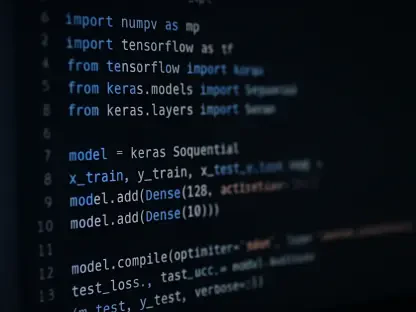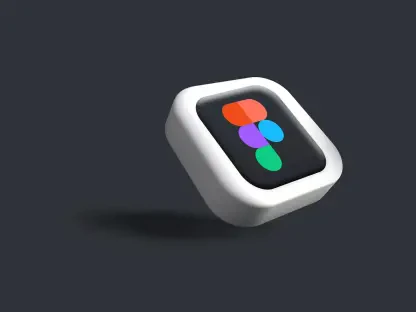Have you ever poured hours into crafting a perfect Python application, only to hit a wall when trying to share it with users who don’t have Python installed? The frustration of packaging a program into a standalone, clickable executable is a hurdle many developers face. Yet, amidst this challenge, a tool named PyApp, built with the power of Rust, emerges as a beacon of simplicity. This utility promises to transform the daunting task of distribution into a seamless process, allowing developers to focus on coding rather than deployment woes.
Why Struggle with Python Distribution When There’s an Easier Path?
Distributing Python applications has long been a thorn in the side of developers. The process often involves wrestling with complex tools that either fail to deliver or demand extensive troubleshooting. Many have spent late nights tweaking configurations just to produce a working binary, only to face compatibility issues across platforms. The need for a streamlined solution is evident, as more developers turn to Python for cross-platform tools and desktop applications.
PyApp offers a refreshing alternative to this struggle. Written in Rust, this tool cuts through the clutter of traditional packaging methods by providing a straightforward way to create self-contained executables. Unlike other solutions that burden users with prerequisites, PyApp ensures that end users can run applications without needing Python on their systems, addressing a critical pain point in distribution.
This innovation couldn’t come at a better time. With the growing demand for user-friendly Python apps in diverse fields, from data analysis to GUI tools, having a reliable packaging mechanism is essential. PyApp positions itself as a vital asset for developers aiming to reach broader audiences with minimal friction.
The Enduring Challenge of Python Packaging
The brilliance of Python lies in its versatility, making it a go-to language for countless projects. However, turning a Python script into a distributable package often feels like navigating a maze. Tools like PyInstaller, while widely used, frequently require persistent adjustments to handle dependencies, leading to delays and frustration among developers.
Newer contenders, such as Nuitka, aim to solve some of these issues by compiling Python code into binaries. Yet, the trade-off often comes in the form of oversized files and prolonged build times, which can deter developers working under tight deadlines. These challenges highlight a gap in the ecosystem for a tool that balances efficiency with ease of use.
PyApp steps into this void with a modern approach, prioritizing both speed and simplicity. By leveraging Rust’s performance capabilities, it addresses the shortcomings of existing solutions, offering a lightweight method to package applications. This shift is particularly significant as the Python community continues to expand, demanding tools that keep pace with evolving needs.
Exploring PyApp: A Breakthrough for Python Developers
At its core, PyApp redefines the packaging landscape by functioning as a Rust-based utility that compiles Python projects into standalone binaries. What sets it apart is its ability to embed an entire application, packaged as a wheel file, directly into the executable. This means users can launch the app without any external dependencies, simplifying the experience for non-technical audiences.
The build process is distinct from other tools, requiring developers to compile PyApp from source for each project. This tailored approach ensures that the resulting binary is customized to the specific application, enhancing compatibility. Additionally, features like environment variable controls allow for fine-tuned behavior, such as specifying startup scripts or installation paths.
A practical example underscores its value: consider a small Tkinter-based GUI application for managing personal tasks. With PyApp, transforming this into a single, distributable executable takes significantly less time compared to alternatives. This efficiency can be a game-changer for developers looking to deliver polished products to clients or end users swiftly.
Voices from the Field: What Experts and Users Think About PyApp
Though relatively new, PyApp has already sparked interest within the developer community for its intuitive design. Serdar Yegulalp, a seasoned technology journalist at InfoWorld, has noted it as potentially “the easiest Python packager yet,” highlighting its potential to redefine distribution standards. Such endorsements from industry experts lend credibility to the tool’s emerging reputation.
Feedback from early users further reinforces this perspective. Many have shared stories of drastically reduced setup times, with one developer reporting on a forum that packaging a simple script took under 20 minutes on the first attempt. This stands in stark contrast to the hours often spent debugging with other packaging utilities, illustrating PyApp’s practical impact.
The buzz around PyApp also reflects a broader trend in the Python ecosystem toward tools that prioritize user experience. As more developers adopt it for projects ranging from small scripts to complex applications, the collective insights suggest that PyApp could become a staple for those seeking hassle-free distribution. These real-world experiences paint a promising picture of its role in the community.
Your Roadmap to Packaging with PyApp: A Step-by-Step Guide
Getting started with PyApp to package a Python application is more accessible than one might expect. Begin by cloning the PyApp source code from its repository and ensuring the Rust compiler is installed on the system. For those new to Rust, basic tutorials can provide the necessary groundwork. Simultaneously, prepare the Python project as a wheel (.whl) file, which serves as the input for the packaging process.
Next, configure essential environment variables to define the project details. Variables like PYAPP_PROJECT_NAME specify the app’s identity, while PYAPP_PROJECT_PATH points to the wheel file’s location. Options such as PYAPP_EXEC_MODULE or PYAPP_EXEC_SCRIPT determine the app’s entry point, and setting PYAPP_DISTRIBUTION_EMBED ensures offline functionality by embedding the Python distribution. These settings lay the foundation for a successful build.
The final steps involve compiling the binary by navigating to the PyApp source directory and running cargo build --release. This process, though initially time-consuming due to Rust dependencies, becomes quicker in subsequent builds. Once complete, test the resulting executable—found in the target/release folder as pyapp.exe—to confirm it unpacks and runs correctly. Commands like pyapp self remove help manage deployed files, though developers should note potential antivirus false positives on Windows due to unsigned binaries. This structured approach ensures a smooth transition from code to distributable app.
Reflecting on a Simpler Path Forward
Looking back, the journey of Python packaging has often been fraught with obstacles that tested the patience of even the most seasoned developers. PyApp has emerged as a tool that tackles these hurdles head-on, offering a streamlined method to create standalone executables. Its Rust-based framework has proven to be a reliable ally in simplifying distribution.
Beyond its immediate benefits, the adoption of PyApp has sparked conversations about the future of Python tooling. Developers are encouraged to explore its capabilities further, experimenting with diverse projects to uncover additional use cases. Engaging with community forums to share experiences could also drive improvements and foster a collaborative environment.
As the landscape of software development continues to evolve, staying adaptable has become key. Embracing tools like PyApp is a step toward reducing technical barriers, allowing focus to shift back to innovation. The path ahead invites exploration of how such solutions could integrate with emerging technologies, ensuring Python applications reach users with unprecedented ease.









